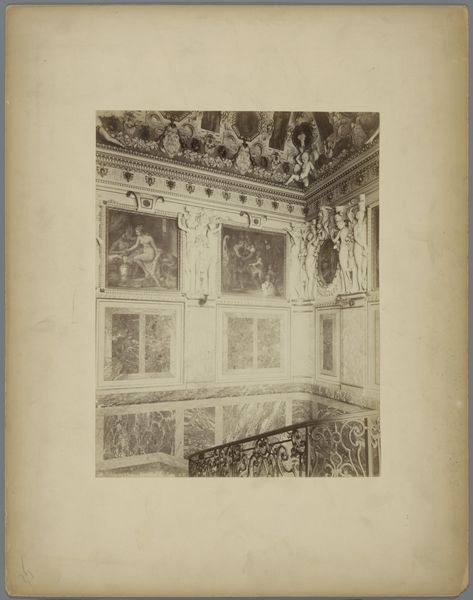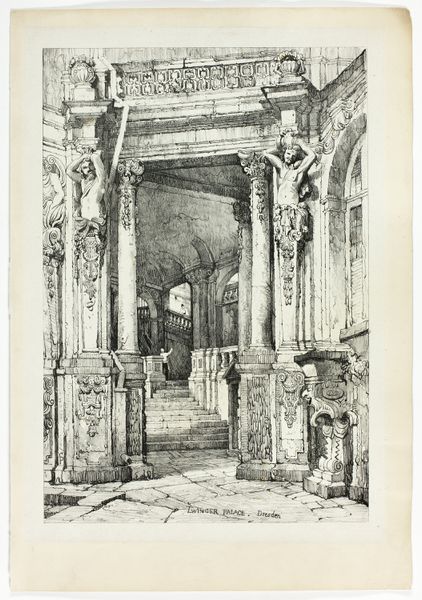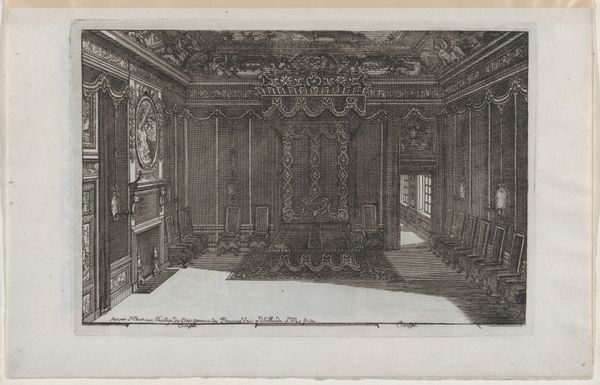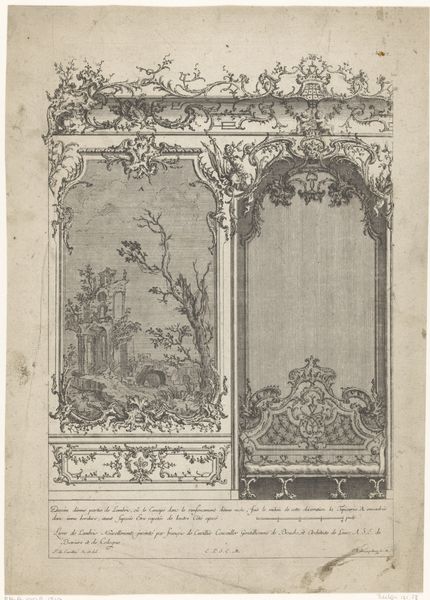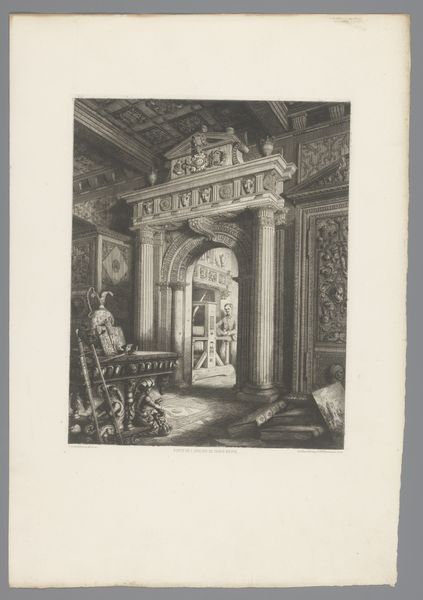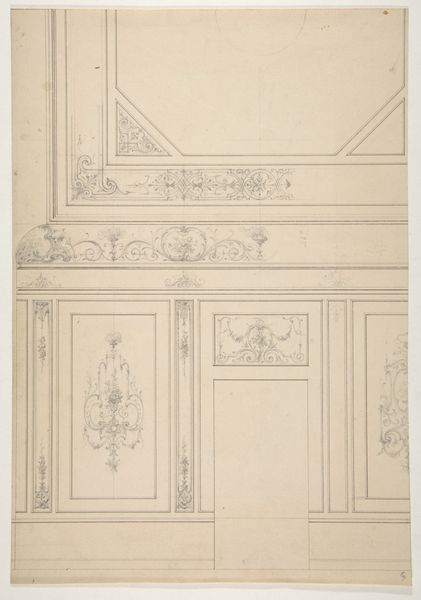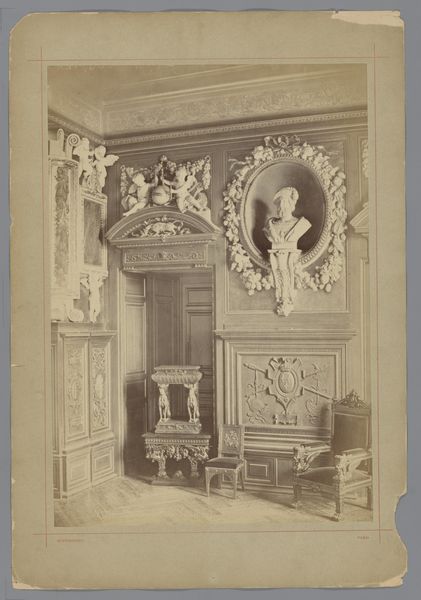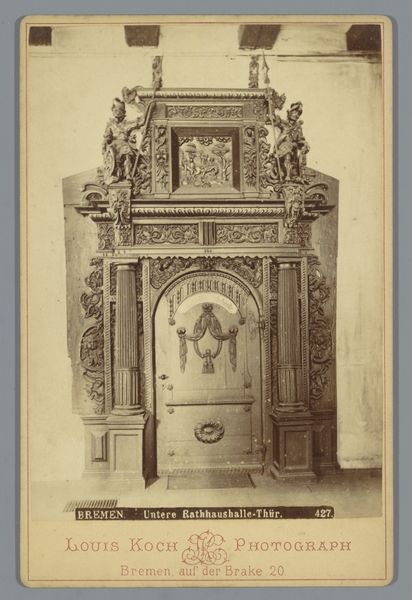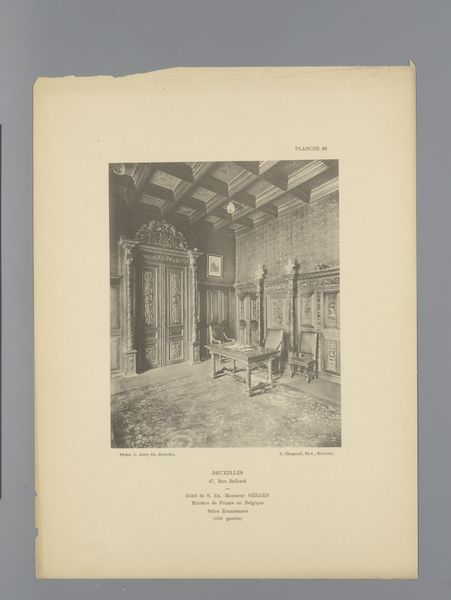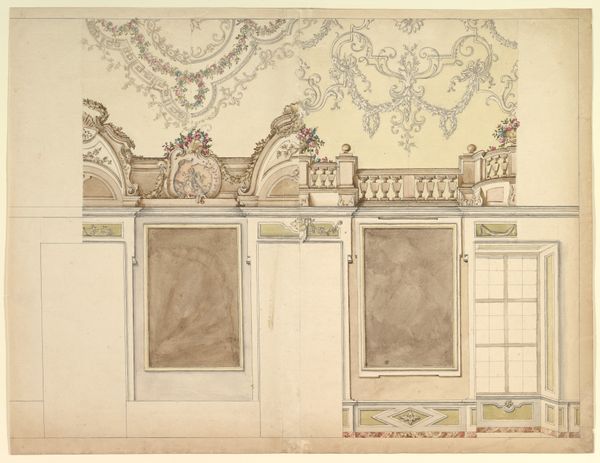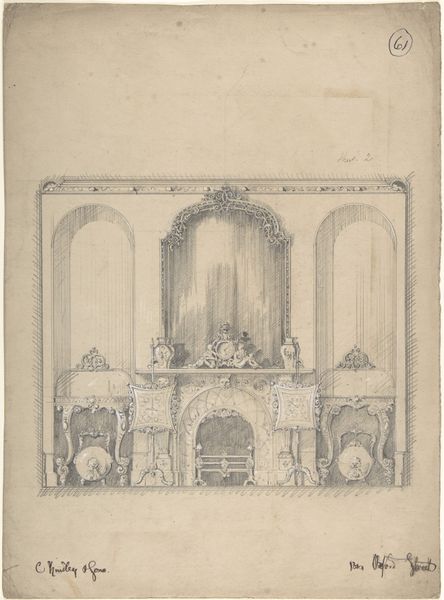
Dimensions: height 311 mm, width 214 mm
Copyright: Rijks Museum: Open Domain
Curator: Oh, look, it's positively dripping with rococo drama. Feels like I should be wearing powdered wig and plotting some courtly intrigue! Editor: Indeed! What we have here is a gelatin silver print titled "Interieur van de eetzaal in de Amalienburg te München," dating roughly from 1875 to 1900. The creator, sadly, remains anonymous. What strikes me most is how it captures a particular kind of constructed space and the power dynamics embedded within such ornate settings. Curator: Constructed is right! I mean, the amount of detail jammed into every corner…it’s almost suffocating. You can almost smell the beeswax and old money just radiating out. I'm getting whiplash just imagining dining in that room, so many surfaces all competing for your gaze. Editor: Precisely. This aesthetic, born from the excesses of baroque architecture, translates here into photographic form. This begs questions about access, who gets to see this room, who it caters for. Photography in this period played a crucial role in documenting and disseminating such spaces to a broader, though still privileged, audience. Curator: It's interesting you mention access because despite all the gilding and grandeur, there's something really stark about the composition. Almost sterile. Maybe it’s the photographer trying to be objective. Is it to remove all warmth, or do you think it reflects something colder about this place? Editor: A fascinating point. The very nature of black and white photography strips away any warmth inherently present through color and the monochrome palette highlights structure but also alienation. The symmetry enforced by doors, mirrors, all create an odd coldness. And while seemingly benign in subject matter, the history of these dining halls and the societal hierarchies present can't be ignored. This dining room served a function within the machinery of privilege. Curator: Definitely makes you think about the meal and all its political implications beyond a sumptuous menu. Editor: Absolutely. Viewing this image provokes questions about the intertwined relationship of wealth, taste, and power at a particular moment in European history. I'd even extend this, and explore more contemporary contexts relating to ownership of space in an urban environment and issues of access… Curator: Well, for me, it's stirred a strange urge to smash some decorative porcelain – in a carefully considered, theoretically sound way, of course. Editor: Haha! And there is always more that we can continue to unravel and consider from single spaces such as this.
Comments
No comments
Be the first to comment and join the conversation on the ultimate creative platform.
